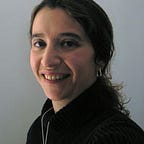Future Forest Dwellers: Reforest for Climate
Plant a tree, save humanity. Or rather, plant untold millions of trees and give humanity a fighting chance against climate change. That’s the bottom line of a lot of talk lately about a high-profile Science study, which broke the news that massive global reforestation could solve climate change. Many outlets spread the news, providing a glimmer of hope in the ceaseless bad news about climate.
Despite all the press, the notion of reforestation to fight climate change isn’t particularly ground-breaking. E.O. Wilson had some global-scale thoughts about this “rewilding” some time ago. Data for Progress’s Green New Deal calls for reforesting forty million acres of the US in the next fifteen years. At the city level, making a warmer world more livable involves trees, to reduce heat island and ground-level ozone, make non-car transportation more appealing, and improve resilience to massive rain events. Cities like Los Angeles have new reforestation efforts — 90,000 trees in two years! — and newly-created positions to oversee these efforts. Lots of people have this “more trees for climate action” idea because it’s a good idea: reforestation is not only effective, but nearly foolproof. An urban tree might die, but it can’t really backfire otherwise, and those trees that live provide a whole host of additional benefits beyond climate. Compared to any kind of new technological solution, planting trees is tried and true, and relatively cheap per tree.
What does this look like, though?
What about the people among all those trees?
A future with a lot more trees could look a bit like the present in in the re-forest that already covers Connecticut, and to some extent, the rest of southern New England, as I mentioned in this previous post. As a refresher, European settlement and its attendant clear-cutting began in the 1630s in Connecticut. By 1820, only about 25% of Connecticut was still forested, but due to the opening of much more fertile farmland further west, Connecticut’s farm fields and pastures began to revert to forest starting around 1870. This tiny state is now around 60% forested. Yet with 3.6 million people, it’s certainly not wilderness — Connecticut is one of the most densely populated states. Lots of people, but also lots of trees. If you want to know about living alongside trees, this is the place to learn.
This brings us to some math helpfully provided by the state of Vermont. They reckon an average acre of forest stores 107 metric tonnes of carbon (MtC). That’s pure carbon, not carbon dioxide, and not emissions like your car creates. By that more real-world measure, an average forested acre stores 393 MtCO2e, which is the annual emissions from 83 cars.
One acre = 83 cars isn’t bad, but it’s also really simplistic. A forest isn’t just a forest — the kind of trees growing in the forest matters, as well as how old they are, how large they are, and most particularly, what’s in the soil around them. Generally, the best trees for storing carbon are those with heavy, dense wood, like oaks, for example. Just as logically, the larger the tree, the more carbon it stores, giving older, larger trunk-diameter (aka caliper) trees the edge as well as those with a larger ultimate size. In measures of annual carbon storage, the growth rate of trees matters, which is a little contradictory, since softer-wooded trees often grow more quickly. Confused yet?
Consider this, too: the management of the forest matters quite a bit, too, maybe as much as what’s growing there, because carbon remains stored in fallen leaves and branches, too. Organic matter in the soil may be the largest carbon sink in our hypothetical acre of forest, but to get that organic matter, the branches, leaves, and other tree detritus must be allowed to accumulate and decay naturally, not raked or removed. Fallen trees contribute to this total, too.
The trees matter. The soil matters. What’s under the trees matters. The management (or lack of it) of the forest matters. And all these things matter tremendously, because climate change is a real, present, existential threat to humanity.
As we dig into it, the details of our forest acre end up making all the difference in terms of its climate action benefit. There’s plenty of unanswered questions about the forest itself, but those questions multiply when we add people into the mix and start asking about what, if any, benefit we get from the trees in places closer to us — not an acre of forest, but a single red maple in the yard or a lone honey locust along the street.
Can we fit some of this needed reforestation into places people live?
What’s the best way to do that, for climate and for those of us living in the Re-Forest?
What can we learn from the reforested places, like Connecticut, we already have?
More like this on my blog, City Wild.
